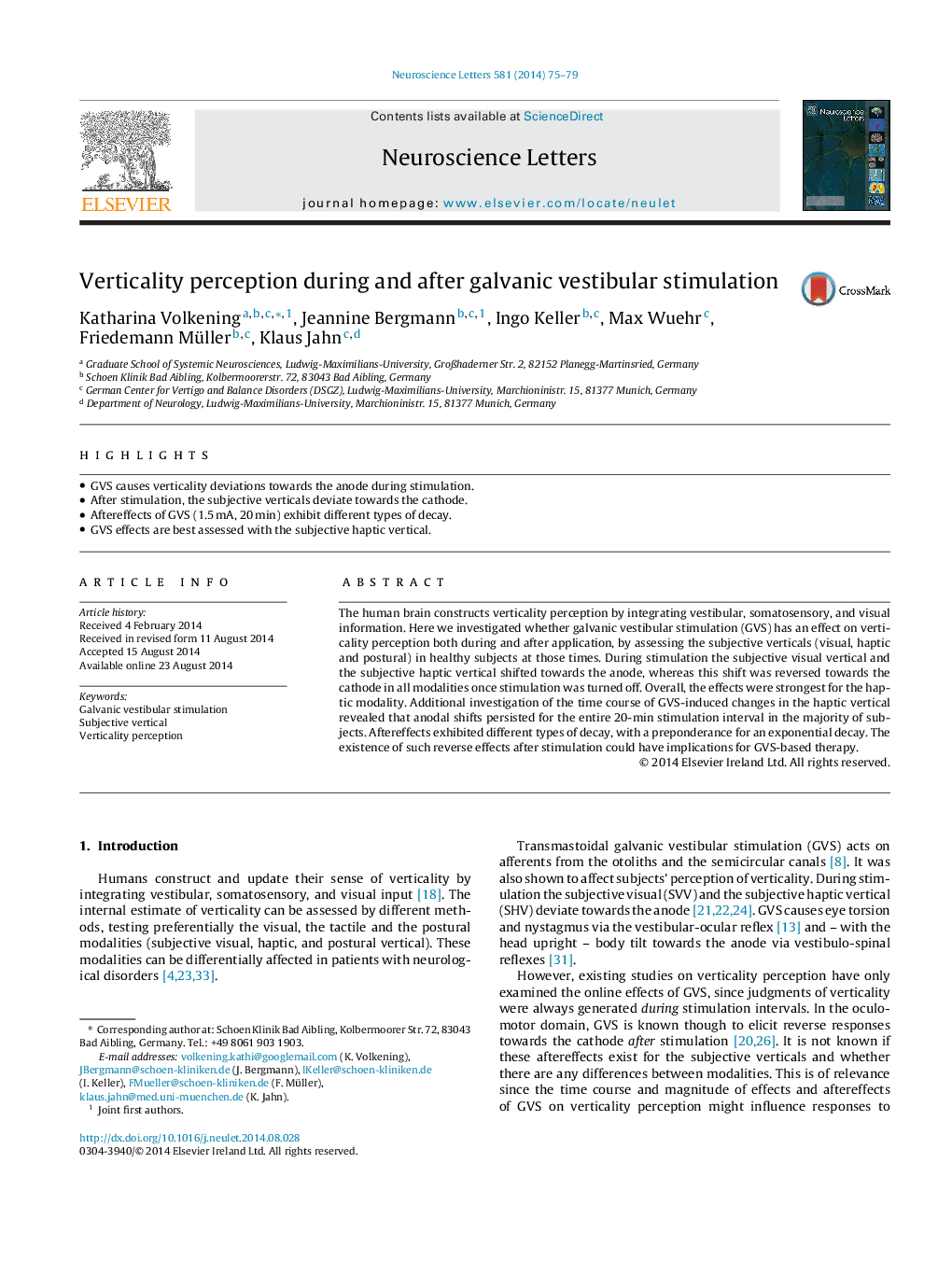| Article ID | Journal | Published Year | Pages | File Type |
|---|---|---|---|---|
| 6281595 | Neuroscience Letters | 2014 | 5 Pages |
Abstract
The human brain constructs verticality perception by integrating vestibular, somatosensory, and visual information. Here we investigated whether galvanic vestibular stimulation (GVS) has an effect on verticality perception both during and after application, by assessing the subjective verticals (visual, haptic and postural) in healthy subjects at those times. During stimulation the subjective visual vertical and the subjective haptic vertical shifted towards the anode, whereas this shift was reversed towards the cathode in all modalities once stimulation was turned off. Overall, the effects were strongest for the haptic modality. Additional investigation of the time course of GVS-induced changes in the haptic vertical revealed that anodal shifts persisted for the entire 20-min stimulation interval in the majority of subjects. Aftereffects exhibited different types of decay, with a preponderance for an exponential decay. The existence of such reverse effects after stimulation could have implications for GVS-based therapy.
Related Topics
Life Sciences
Neuroscience
Neuroscience (General)
Authors
Katharina Volkening, Jeannine Bergmann, Ingo Keller, Max Wuehr, Friedemann Müller, Klaus Jahn,
